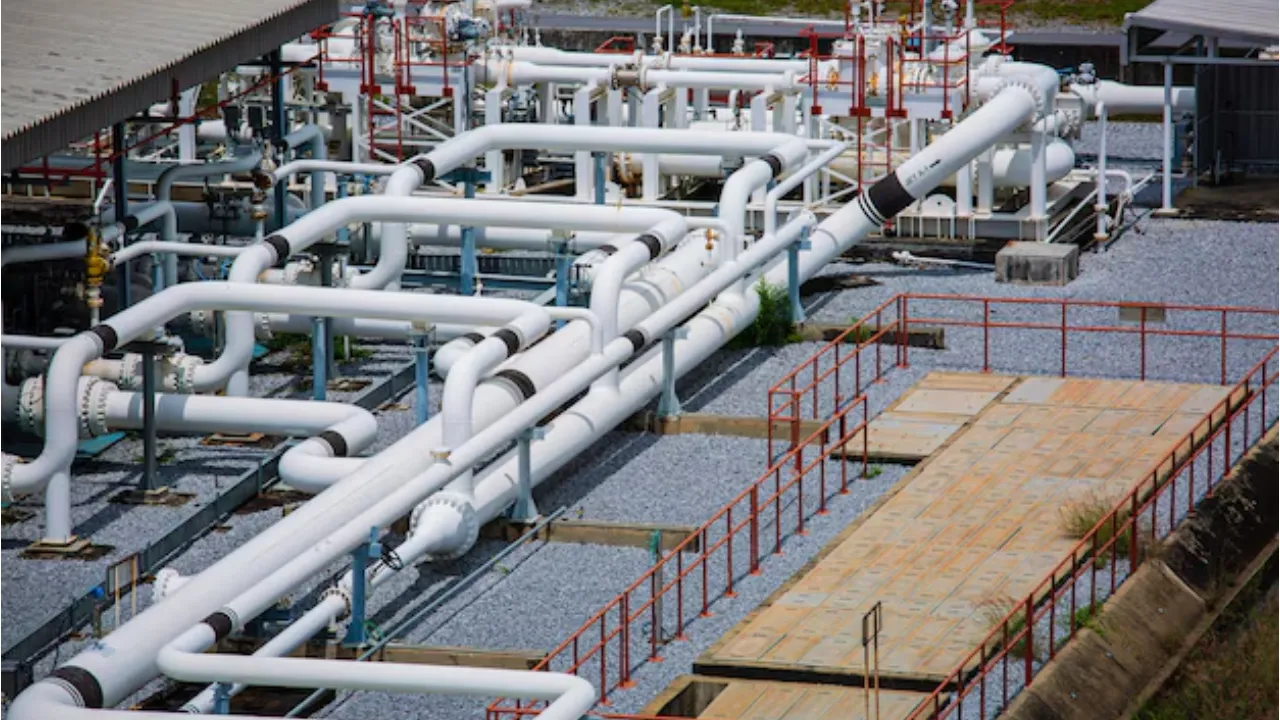The Role Of Caustic Soda in Oil Refining

Introduction
Caustic soda, commonly known as sodium hydroxide (NaOH), is a cornerstone chemical in the oil refining industry. Its strong alkaline properties make it indispensable for removing impurities, neutralizing acids, and improving fuel quality. Refineries worldwide rely on caustic soda for its efficiency, versatility, and cost-effectiveness in handling complex petroleum fractions. From crude oil pre-treatment to final fuel polishing, caustic soda plays multiple roles that enhance both product quality and operational safety.
What is Caustic Soda?
Caustic soda is a highly alkaline, corrosive, and water-soluble chemical available in various forms, including flakes, pearls, and liquid solutions. Its ability to react with acidic and sulfur-containing compounds makes it particularly valuable in oil refining. Its key characteristics include:
-
High Alkalinity: Effectively neutralizes acids in crude oil and refined products.
-
Versatility: Available as solid flakes, uniform pearls, or liquid solution for precise dosing.
-
Corrosive Nature: Requires careful handling to prevent chemical burns or equipment damage.
-
Water Solubility: Allows easy integration into refinery processes and wastewater treatment.
Properties Relevant to Oil Refining
-
Neutralization Capability: Reacts with naphthenic acids, organic acids, and sulfur compounds.
-
Chemical Stability: Retains effectiveness under high-temperature and high-pressure refining conditions.
-
Solubility: Forms water-soluble salts that can be separated from petroleum fractions.
-
Reactivity Control: Can be safely dosed in controlled quantities for precise refining outcomes.
Applications of Caustic Soda in Oil Refining
Caustic soda’s applications in oil refining are extensive, covering multiple stages of the refining process:
1. Acid Neutralization
Crude oil often contains naturally occurring acidic compounds such as naphthenic acids, which can corrode refinery equipment and pipelines. Caustic soda reacts with these acids to form water-soluble sodium salts, which are easily removed in the downstream water phase. This step is critical in preventing corrosion, reducing maintenance costs, and extending equipment life.
2. Desulfurization and Sweetening
Sulfur compounds, including mercaptans and hydrogen sulfide, negatively affect fuel quality and produce harmful emissions when burned. Caustic soda is used in sweetening processes to remove these sulfur compounds from petroleum products. It reacts with sulfur-containing molecules, forming non-volatile salts, which enhance fuel odor, reduce environmental impact, and meet regulatory standards.
3. Purification of Lubricating Oils
Refining lubricating oils requires the removal of acidic and resinous impurities. Caustic soda is used in caustic refining to clarify base oils, improve viscosity, and enhance oxidation stability. The process increases the durability and performance of lubricants while ensuring compliance with industrial specifications.
4. Refining of Kerosene and Diesel
In the production of kerosene, diesel, and other middle distillates, caustic soda helps remove trace acids and sulfur compounds that can affect combustion quality. By neutralizing these impurities, caustic soda ensures better engine performance, reduces deposit formation, and prevents corrosion in storage tanks and pipelines.
5. Wastewater Treatment
Refineries produce significant volumes of acidic wastewater containing residual hydrocarbons, phenols, and sulfur compounds. Caustic soda is extensively used to neutralize these streams, promote coagulation, and aid in the precipitation of contaminants. Proper treatment improves environmental compliance and reduces the ecological footprint of refinery operations.
6. Catalyst Preparation and Process Control
Certain refinery catalysts and chemical processes require caustic soda for pH adjustment or as part of preparation steps. Its precise dosing helps maintain optimal reaction conditions, improving efficiency in hydrocracking, hydrotreating, and other catalytic refinery processes.
Handling and Storage of Caustic Soda in Refineries
Due to its highly corrosive nature, safe handling and storage of caustic soda are critical:
-
Storage Conditions: Keep solid forms in a dry, cool, and well-ventilated area away from moisture, acids, and metals. Liquid caustic soda should be stored in corrosion-resistant tanks with proper containment.
-
Handling Procedures: Use automated dosing systems to minimize human exposure. Avoid direct contact with skin or eyes.
-
Temperature Control: Avoid storing in extreme temperatures to prevent degradation or caking.
-
Segregation: Store caustic soda separately from incompatible chemicals, including acids, oxidizers, and certain metals.
Safety Tips
Working with caustic soda requires strict adherence to safety protocols:
-
Wear appropriate personal protective equipment (PPE), including gloves, goggles, face shields, and chemical-resistant clothing.
-
Ensure proper ventilation in storage and handling areas to prevent inhalation of vapors.
-
Have emergency eyewash stations and showers readily available in case of accidental contact.
-
Implement spill containment and neutralization procedures for liquid or solid caustic soda spills.
-
Train personnel on safe handling, first aid measures, and chemical emergency response.
Packing and Supply
Caustic soda is supplied in forms and packaging suitable for refinery operations:
-
Flakes: Packaged in 25–50 kg moisture-proof bags, ideal for solid dosing systems.
-
Pearls: Uniform spherical pellets for consistent feeding and automated processing.
-
Liquid (50% solution): Supplied in drums, IBCs, or bulk tanks for precise injection into refinery streams.
-
Bulk Shipments: Available in jumbo bags or tanker trucks for industrial-scale operations.
Conclusion
Caustic soda is an essential chemical in oil refining, providing neutralization, desulfurization, purification, and wastewater treatment. Its role is critical in maintaining product quality, ensuring operational efficiency, and reducing environmental impact. By selecting high-quality caustic soda and following proper handling and safety protocols, refineries can optimize performance and achieve regulatory compliance.

